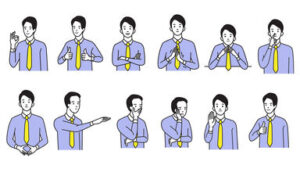
Pic courtesy Net
Communication is an art/skill.
As a speaker, you are a salesman trying to sell your idea.
DOs
Provide a Reason for the Audience to Listen. Tell the audience why they should listen carefully to you. Tell them what is in it for them.
Give Perspective. Generally, the chosen topics are very broad-based. Providing a perspective narrows down the scope and also provides the framework for the talk.
Establish Credibility. Give the audience a reason to believe your claim. Point out why your thoughts and your words are relevant and they matter.
Save the Best for Last. Once you have the audience’s attention, speak about what you need them to hear. To keep the interest alive keep providing glimpses of what is coming up.
Correlate Issues with the Audience. Establish the repercussions of the issues being discussed. Focus your communication on the issues that the audience correlates with.
Provide Obvious Seeming Solutions. Good communication provides solutions. Do not make them sound too complex, instead make them seem obvious. This gives the audience a sense of ownership and increases their interest.
Crystal Gaze. Always resort to some amount of crystal gazing and forecasting about things to come in the future.
|
Pic courtesy Net
Body Language: Avoid These Blunders
Our bodies have a language of their own.
Body language is a very powerful tool.
DONTs:
Crossed Arms. Creates a physical barrier that suggests you’re not open to what the other person is saying. The other person may get a sense that you’re shutting him or her out.
Exaggerated Gestures. Instead aim for small, controlled, and open gestures.
Turning Yourself Away. Conveys that you are unengaged, uninterested, uncomfortable, and perhaps even distrustful.
Slouching. It is a sign of disrespect. It communicates that you’re bored and have no desire to be where you are.
Avoiding Eye Contact. It arouses suspicion and also indicates a lack of confidence and interest. Sustained eye contact, on the other hand, communicates confidence, leadership, strength, and intelligence.
Too Intense Eye Contact. It may be perceived as an aggressive dominating approach.
Watching the Clock Frequently. It is a sign of impatience and disrespect. It sends the message that you have better things to do than talk to the person you’re with.
Fidgeting and Exaggerated Nodding. It distracts and signals anxiousness.
Scowling or Unhappy Expression. This sends the message that you’re upset by those around you, and it turns people away. Smiling, on the other hand, suggests that you’re open, trustworthy, confident, and friendly.
Weak Handshakes. A weak handshake signals a lack of confidence, while a too strong one could be perceived as an aggressive attempt at domination.
Getting Too Close. Standing too close makes people uncomfortable. Respect others’ personal space.
Bottom Line Keep the Audience awake and interested.
Learnt with Experience People love catchy phrases.
Suggestions and value additions are most welcome
For regular updates, please register here
References and credits To all the online news channels.
|

